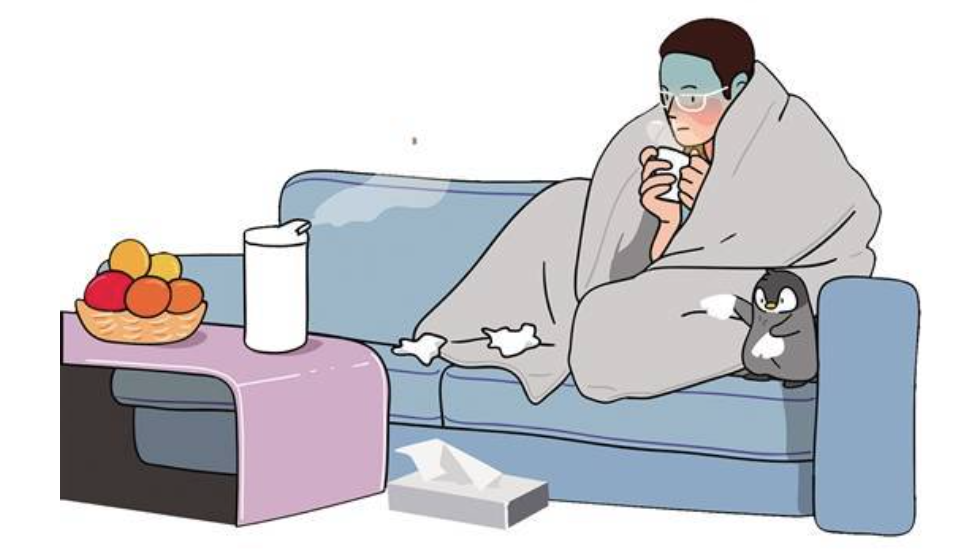Inheriting the legacy of Qi Huang, a public account with substance and warmth.
Ai Yu Xiang Tang
The Six Evils refer to the abnormal changes in the “Six Qi” of the natural world, which are external pathogenic factors; the “Internal Generation of Five Pathogens” (Neisheng Wuxie) is also known as “Internal Five Qi”. This term is named due to its similarities in pathological changes and clinical characteristics with the Six Evils, but there are essential differences between the two.

1. The Distinction Between Pathogenic Causes and Mechanisms The Six Qi, namely wind (feng), cold (han), heat (shu), dampness (shi), dryness (zao), and fire (huo), are a profound summary of the normal climatic changes throughout the four seasons by ancient scholars. The Six Qi are the conditions for the growth of all things in nature, and humans have adapted to them over a long period. However, if the changes in the Six Qi are excessive or insufficient, or if the body’s ability to adapt and regulate declines, it can lead to illness, which is referred to as the “Six Evils”. The “Neijing” (Inner Canon) states that the Six Qi are the main causes of externally contracted diseases, indicating: “All diseases arise from wind, cold, heat, dampness, dryness, and fire, as they transform and change” (Su Wen: Zhi Zhen Yao Da Lun). Thus, the “Six Evils” is a concept of etiology, broadly referring to the six types of external pathogenic Qi: wind, cold, heat, dampness, dryness, and fire. The Internal Generation of Five Pathogens, also known as “Internal Five Qi”, arises from the imbalance of Yin and Yang in the organs, leading to pathological changes such as transformation into wind, cold, dampness, dryness, and fire due to abnormal metabolism of Qi, blood, and body fluids. Because it resembles the pathological phenomena caused by the external evils of wind, cold, dampness, dryness, and fire, and arises from within, it is termed “Internal Generation of Five Pathogens”. It is evident that the “Internal Generation of Five Pathogens” is a comprehensive concept of pathogenesis. It reflects the holistic view of TCM in understanding the pathological changes of the human body, using the method of “analogy with nature” to explain the pathological changes of the body through certain phenomena in the natural world. Therefore, although the “Six Evils” and the “Internal Generation of Five Pathogens” share similarities in the process of understanding, they are fundamentally different in concept: one pertains to etiology, while the other belongs to the realm of pathogenesis.2. Differences in Clinical Manifestations The Six Evils and the Internal Generation of Five Pathogens differ in their mechanisms of onset, the changes in the nature of the disease, and their symptomatology. The external Six Evils are classified as external pathogens, which first attack the exterior and invade from outside to inside, hence the diseases caused are termed externally contracted diseases. The Internal Generation of Five Pathogens results from the body’s own imbalance of Yin and Yang, Qi, and blood, leading to internal injuries and miscellaneous diseases. From the characteristics of pathogenesis, the initial stage of disease caused by the Six Evils often presents with exterior symptoms, such as aversion to wind (cold), fever, nasal congestion, headache, and floating pulse, which are mostly solid conditions; whereas the Internal Generation of Five Pathogens, since the disease arises internally, presents with internal symptoms, leading to different pathological changes depending on the affected organs. For example, excessive liver Yang can transform into wind, while spleen and kidney Yang deficiency can lead to internal cold, and spleen deficiency can give rise to internal dampness, leading to various internal symptoms, which are mostly deficient conditions, or a mix of deficient and solid conditions, although there can be solid conditions, but generally without exterior symptoms. The symptomatology of each has its own characteristics. When external evils cause disease, the manifestations include exterior symptoms and depend on the nature of the pathogenic Qi. For instance, an external wind condition easily attacks the head and facial muscles, exhibiting characteristics of clear and dispersive nature, with symptoms such as aversion to wind, sweating, and headache; internal wind, however, is located in the liver, where excessive liver Yang can transform into wind, leading to symptoms such as dizziness, tremors, and convulsions.3. The Relationship Between External Six Evils and Internal External Pathogens Although there are various differences between the external Six Evils and the Internal External Pathogens, there is also a certain relationship between the two. Firstly, they influence each other during the onset of disease. TCM emphasizes the role of both the righteous and the evil in the disease process, where insufficient righteous Qi is the internal basis for disease, and the evil Qi is the condition for disease onset. The Six Evils often invade when the body’s ability to adapt and regulate is weakened. For example, if there is internal Yang deficiency in the organs, it is easy to be invaded by external cold; if there is spleen deficiency leading to internal dampness, it is easy to attract external dampness. Thus, the “Jin Gui Yao Lue: On Spasms and Dampness” states: “Those with internal dampness must first have internal dampness before external dampness can occur.”Conversely, when the evil is excessive, it harms the righteous. The invasion of the Six Evils damages the righteous Qi, leading to dysfunction of the organs, resulting in the generation of internal evils. For instance, cold evil directly attacks the Shaoyin, harming kidney Yang, leading to internal cold; external damp evil obstructs spleen Yang, causing the spleen to fail to transform dampness, resulting in the generation of internal dampness. Secondly, there is a certain correlation in clinical manifestations. For example, when external cold evil causes disease, excessive cold can harm Yang, especially when the cold evil directly attacks and harms the Yang Qi of the organs, presenting characteristics of both cold evil disease and internal cold of the organs. This is what is referred to in the “Lai Zheng Zhi Cai: On Cold Damage” as: “In cold damage, there can be exterior cold and interior cold… What is interior cold? It refers to cases where cold damage does not enter through the Yang channels but directly enters the Yin channels, leading to cold hands and feet, fine pulse, and diarrhea of clear fluids, known as internal cold, which Zhang Zhongjing referred to as urgent warming, suitable for Si Ni San.” Similarly, external dampness and internal dampness, although differing in nature, can easily obstruct the spleen, hinder Qi movement, leading to symptoms such as abdominal distension, loss of appetite, nausea, and diarrhea. It can be concluded that while there are essential differences in the nature of the pathogenic causes and pathogenesis between external Six Evils and internal external pathogens, their processes of onset and symptomatology are different, hence the distinction of “external” and “internal”; yet in terms of symptom characteristics, they share similarities with the natural phenomena of wind, cold, dampness, dryness, and fire, which is why the external Six Evils and the internal Five Pathogens are both named after wind, cold, dampness, dryness, and fire. The external Six Evils are the pathogenic factors of externally contracted diseases, referred to as external evils. The Internal Generation of Five Pathogens refers to the pathological changes of internal wind, internal cold, internal dampness, internal dryness, and internal heat (fire) arising from the imbalance of Yin and Yang in the organs, belonging to the realm of pathogenesis. Although the clinical manifestations of the Internal Generation of Five Pathogens are similar to the pathogenic characteristics and pathological responses of the Six Evils, they are distinguished from the external wind, cold, dampness, dryness, and fire, hence the term “internal” is used, referring to the “Internal Generation of Five Pathogens”. The clinical manifestations of the Internal Generation of Five Pathogens generally do not present with exterior symptoms, but rather as deficient conditions, solid conditions, or a mix of both. The external Six Evils, when acting on the body, lead to pathological changes due to the dysfunction of Yin and Yang, Qi, and blood in the organs, which often present with exterior symptoms and are mostly solid conditions. Pure summer heat generally does not present with exterior symptoms, but often accompanies dampness, termed summer dampness, which does present with exterior symptoms. Only when the external evil directly attacks can interior symptoms be observed. The external Six Evils and the Internal Generation of Five Pathogens represent one as pathogenic factors and the other as pathological results; although there are distinctions, they are closely related. The Six Evils harm the body from the exterior to the interior, damaging the organs, which can easily lead to the harm of the Internal Generation of Five Pathogens. Conversely, the Internal Generation of Five Pathogens, due to dysfunction of the organs, can easily become susceptible to the evils of the Six Evils.The content of this article is for reference only,not for professionaldoctorsto attempt acupuncture or medication.

